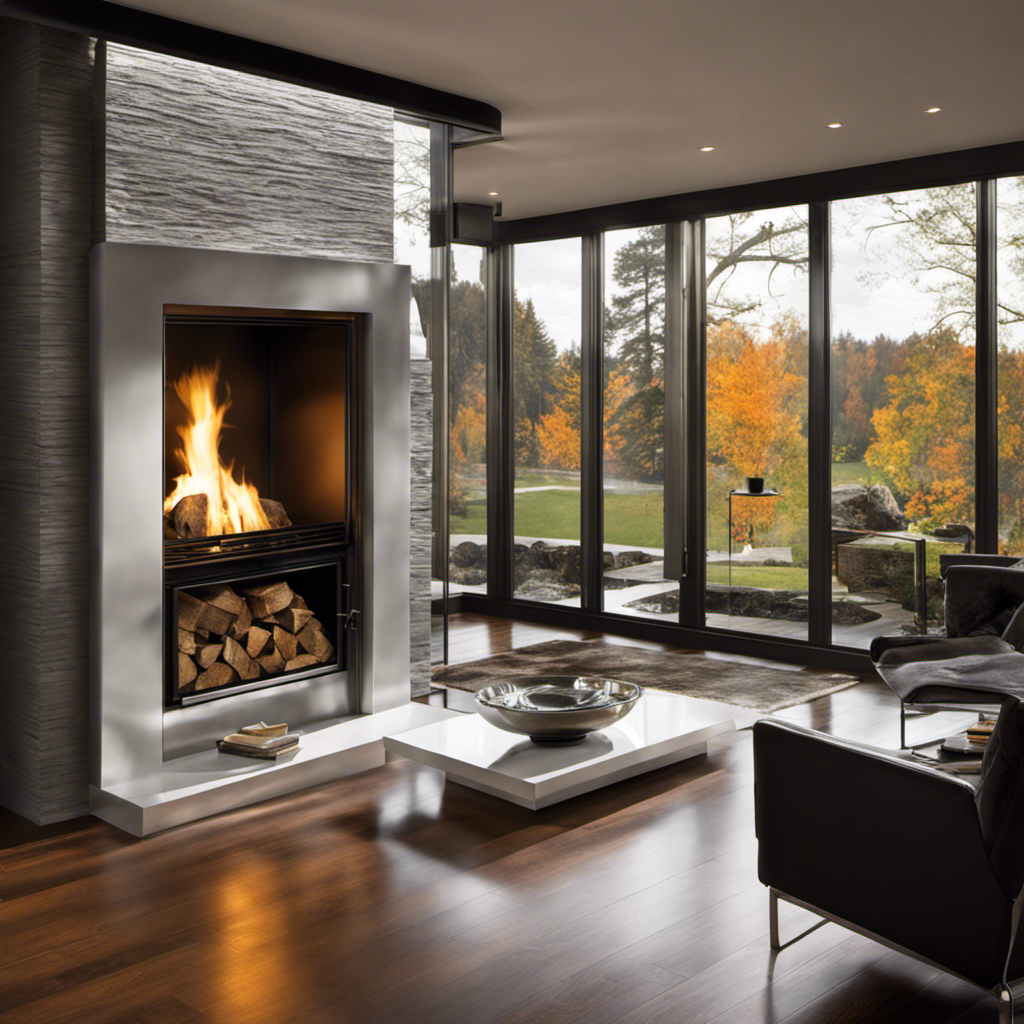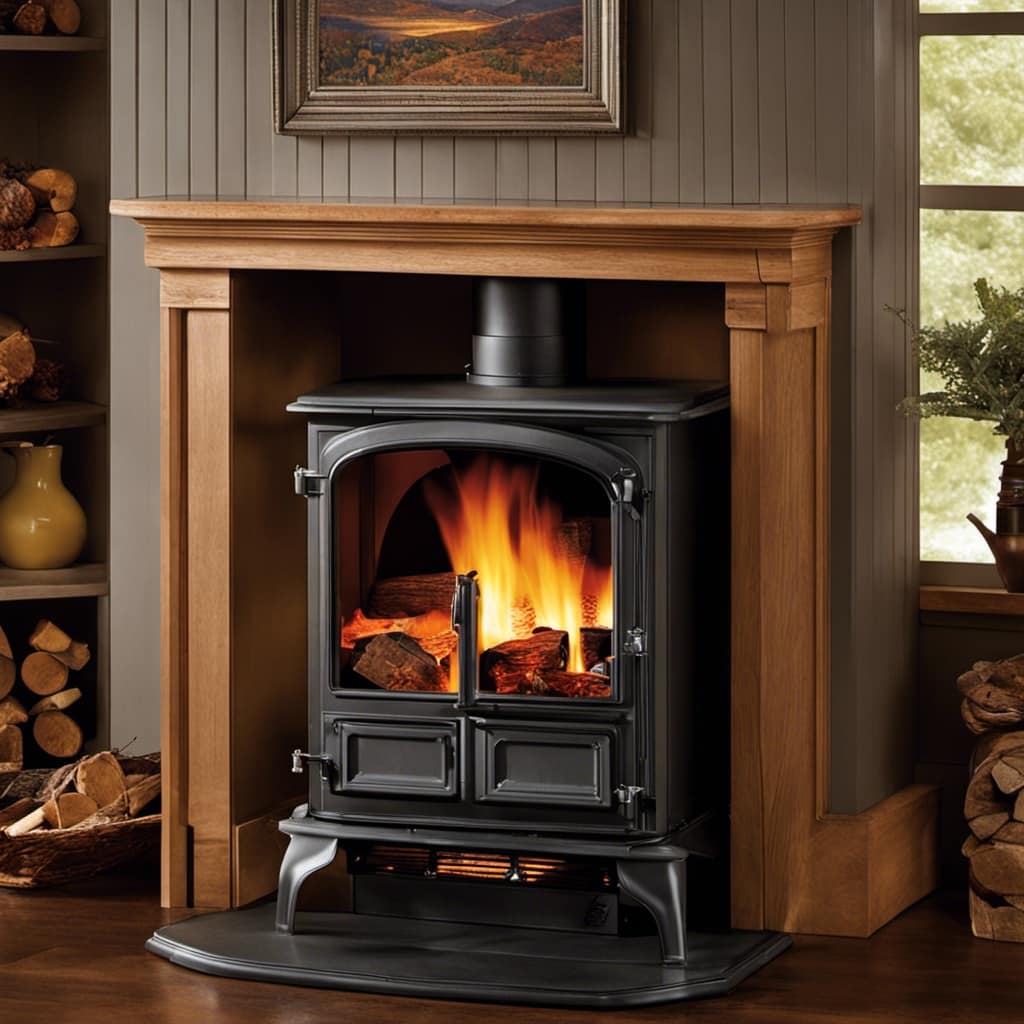
Having trouble stacking your firewood in the wood stove for the best burn? Unsure how to improve airflow for a more efficient burn? You’re in the right place!
In this article, I will guide you through the steps to properly stack firewood in your wood stove. From choosing the right firewood to storing and seasoning it, I’ll share my knowledge and tips to ensure you have a well-stacked firewood supply for optimal heating.
Key Takeaways
- Seasoned firewood burns more efficiently, producing more heat and less smoke.
- Stacking logs in alternating directions allows for stability and better air circulation.
- Proper stacking techniques help the wood dry faster and prevent excessive smoke and creosote buildup.
- Utilize storage containers or covers to protect the wood from moisture and pests.
Choosing the Right Firewood for Your Wood Stove
When it comes to choosing firewood for your wood stove, it’s important to consider the type and quality of the wood.
The best option is seasoned firewood, which refers to wood that has been dried for at least six months to a year. Seasoned firewood has several advantages.

Firstly, it burns more efficiently, producing more heat and less smoke. It also ignites easily, making it convenient to start a fire. Additionally, seasoned firewood produces less creosote buildup, which reduces the risk of chimney fires.
Good choices for seasoned firewood include hardwoods like oak, maple, and birch. These types of firewood provide long-lasting heat and a pleasant aroma, creating a cozy atmosphere in your home.
Preparing Your Woodpile for Stacking
I’m getting ready to stack my woodpile, making sure to arrange the logs neatly and securely. When it comes to woodpile organization and firewood storage, there are a few key considerations to keep in mind.
Here are some tips to help you prepare your woodpile for stacking:
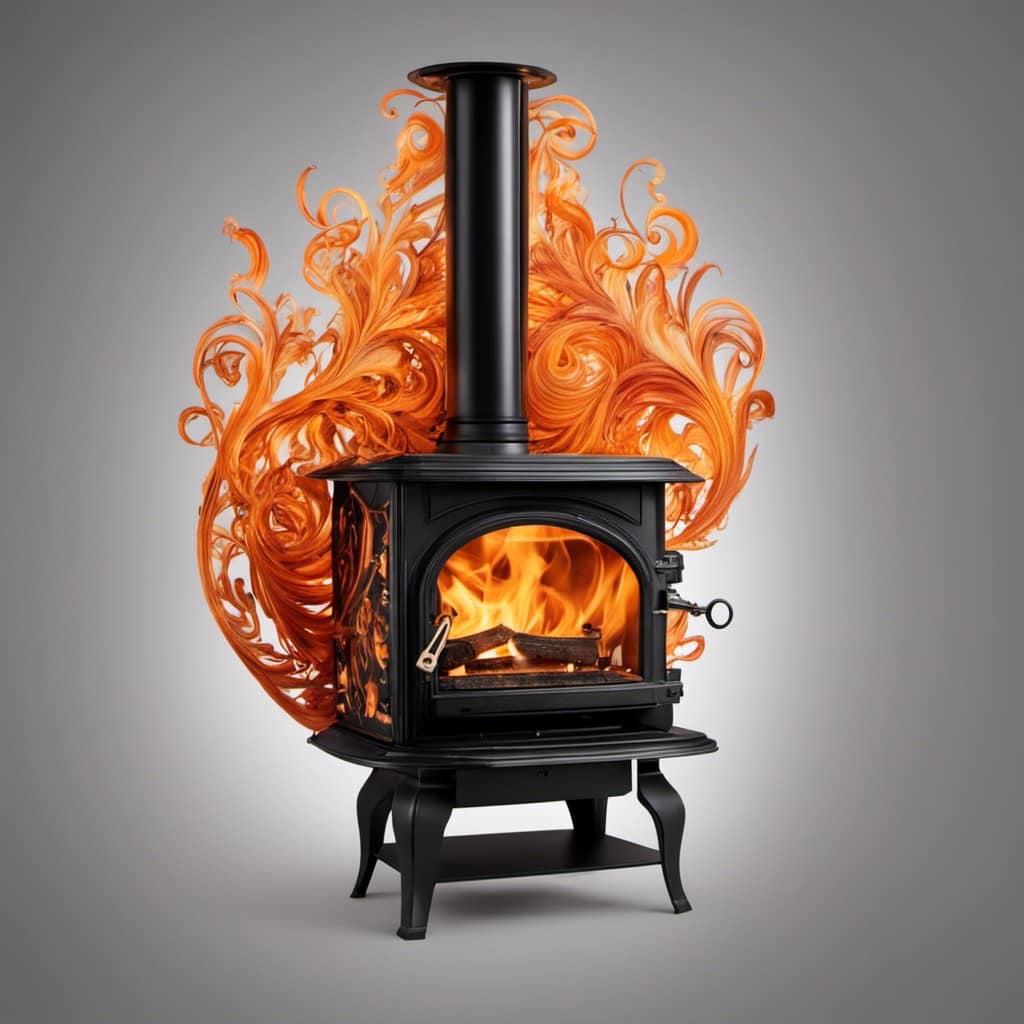
-
Start with a solid foundation: Lay down a layer of bricks or pallets to keep the wood off the ground and prevent moisture absorption.
-
Stack logs in alternating directions: This helps create stability and allows for better air circulation, promoting drying and preventing rot.
-
Leave space between logs: Aim for about an inch of space between each log to allow for proper airflow, which helps to prevent mold and mildew.
Proper Stacking Techniques for Maximum Airflow
I’ve found that stacking the logs in a crisscross pattern and leaving an inch of space between them allows for maximum airflow, ensuring the wood dries efficiently. Properly stacking firewood not only helps it dry faster but also prevents mold and rot. The quality of firewood is crucial for efficient and clean burning. It’s important to use well-seasoned wood with a moisture content of around 20%. Wet or green wood can lead to excessive smoke, poor combustion, and creosote buildup in the chimney. Avoid stacking firewood directly on the ground, as it can absorb moisture and become prone to pests. Additionally, stacking wood too tightly can restrict airflow and hinder the drying process. By following these tips, you can ensure that your firewood is of high quality and ready to provide warmth and comfort during the colder months.

| Importance of Firewood Quality | Common Mistakes to Avoid When Stacking Firewood |
|---|---|
| Well-seasoned wood burns efficiently and produces less smoke. | Stacking wood too tightly restricts airflow and slows down the drying process. |
| Low moisture content (around 20%) prevents excessive smoke and creosote buildup. | Stacking firewood directly on the ground can lead to moisture absorption and pest infestation. |
| High-quality firewood provides better heat output and reduces the risk of chimney fires. | Failing to cover the top of the woodpile leaves it exposed to rain and snow, increasing moisture content. |
Storing and Seasoning Firewood for Optimal Burning
Honestly, storing firewood properly and allowing it to season adequately are essential for achieving optimal burning and maximizing heat output. When it comes to storing firewood in small spaces, there are a few key tips to keep in mind.
Firstly, stacking the wood in a neat and organized manner can help maximize the space available.
Secondly, utilizing vertical storage options, such as wall-mounted racks or stacking the wood against a sturdy structure, can help save precious floor space.
Lastly, consider using storage containers or covers to protect the wood from moisture and pests. Speaking of pests, preventing insects in firewood is crucial.

To do so, avoid storing wood directly on the ground, as this can attract insects. Additionally, inspect the wood for any signs of infestation before bringing it indoors.
Tips for Maintaining a Well-Stacked Firewood Supply
To maintain a well-stacked firewood supply, it’s important to regularly check the wood for signs of moisture or decay, and to replenish the stack as needed.
Properly maintaining firewood moisture is crucial for optimal burning and preventing insect infestation. Moisture content should ideally be below 20% for efficient combustion. To achieve this, firewood should be seasoned for at least 6 months before use. Splitting the wood into smaller pieces and stacking them in a well-ventilated area will speed up the drying process.
It’s essential to cover the top of the stack to protect it from rain while still allowing air circulation. Regularly inspect the wood for signs of decay or insect activity, such as boreholes or frass. Remove any infested pieces and treat the surrounding area to prevent further damage.
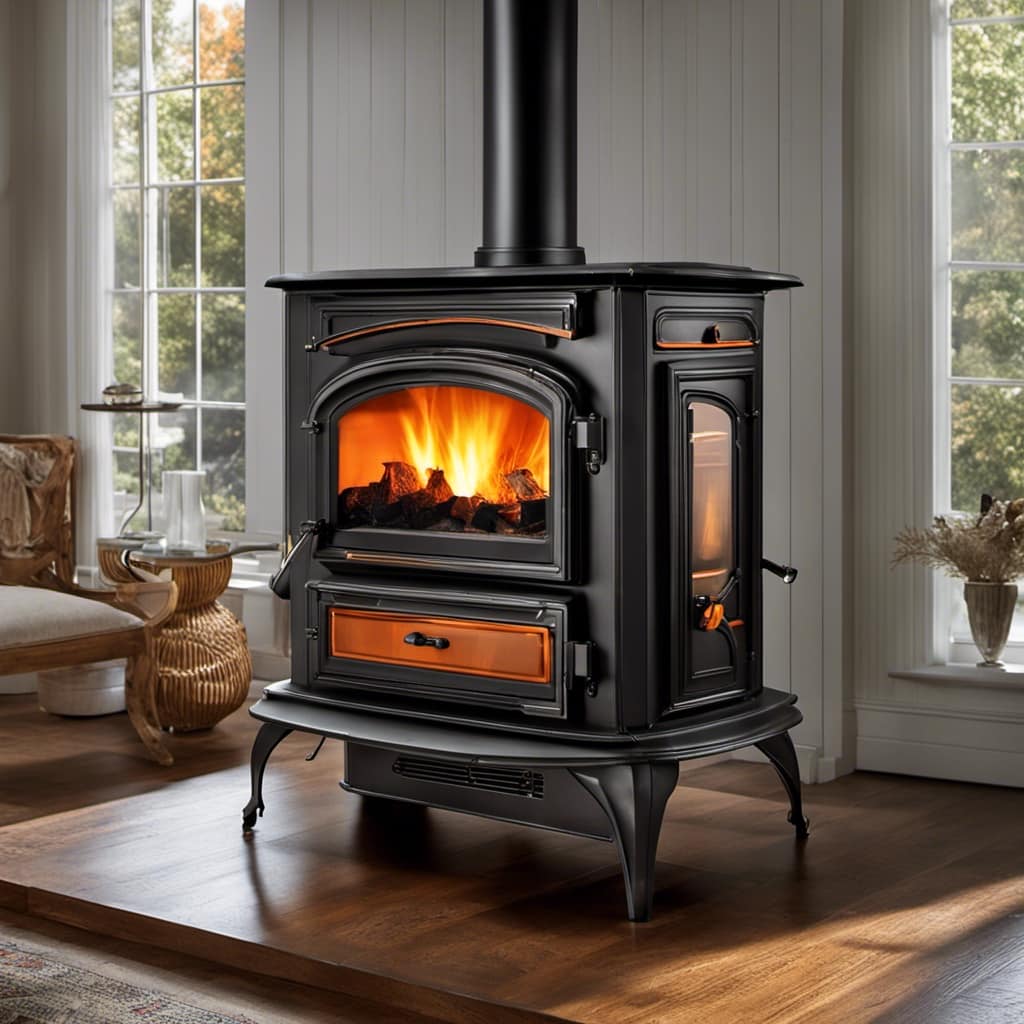
Frequently Asked Questions
How Long Does It Take for Firewood to Properly Season?
It typically takes firewood about 6-12 months to properly season. To identify properly seasoned firewood, look for cracks and splits on the ends. To speed up the seasoning process, ensure proper airflow and stack the wood in a sunny, dry location.
Can I Stack Firewood Directly on the Ground?
Sure, I can stack firewood directly on the ground, but it’s not ideal. To prevent moisture and pests, I recommend using a firewood rack or stacking it on a platform.
What Are the Best Types of Wood for Burning in a Wood Stove?
The best types of wood for burning in a wood stove depend on their moisture content. Properly seasoning firewood is crucial for efficient drying and preventing smoke and creosote buildup.
How High Should I Stack My Firewood Pile?
I’ve always wondered how high I should stack my firewood pile. It’s important to properly stack the wood in a wood stove to ensure proper air circulation. Let me share some tips.
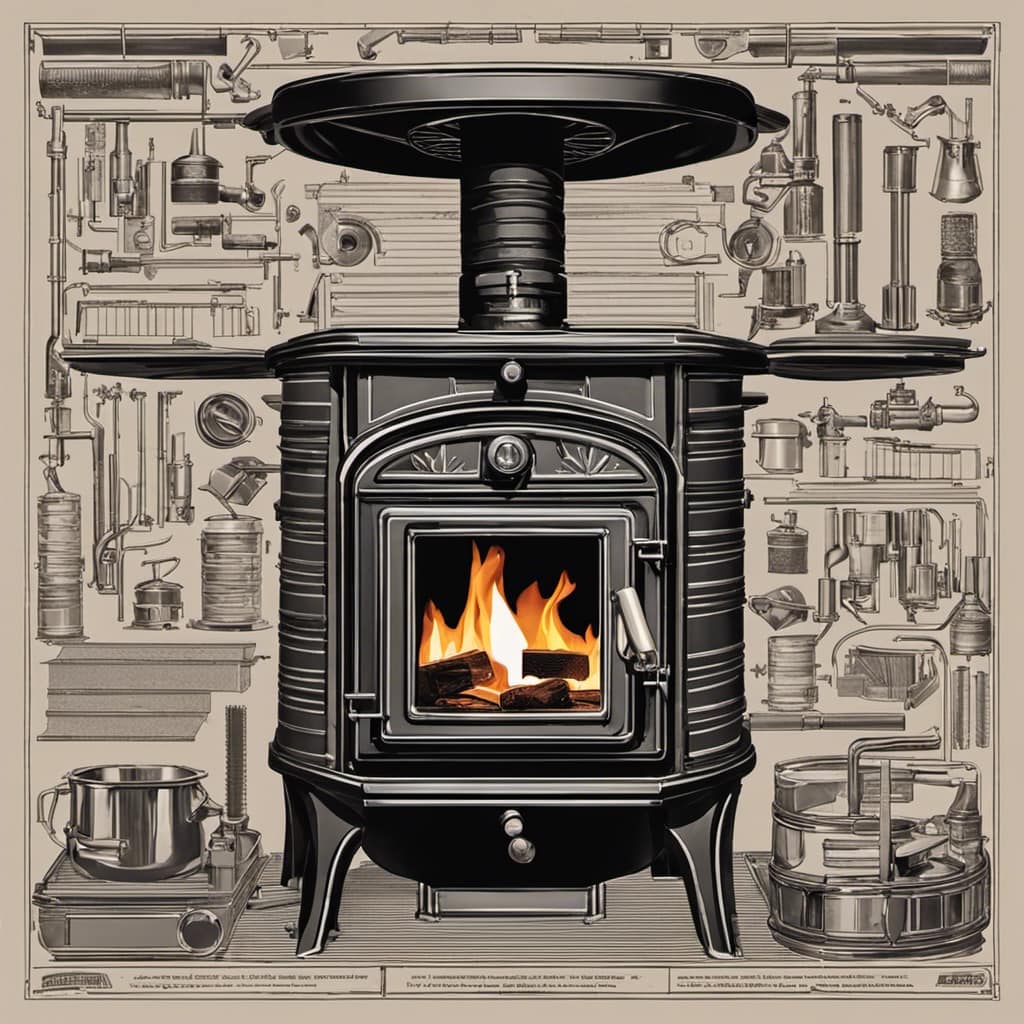
Can I Stack Different Types of Wood Together in the Same Pile?
Mixing different types of wood in the same pile can affect the quality of the fire. Some woods burn hotter and faster, while others burn slower and produce more heat. It’s best to stack similar woods together for optimal results.
Conclusion
By following these proper stacking techniques, you can ensure a well-organized and efficient woodpile for your wood stove. Remember to choose the right firewood, prepare your woodpile, stack it properly for maximum airflow, and store and season it correctly for optimal burning.
With a well-stacked firewood supply, you’ll be able to enjoy a cozy and warm fire all winter long. So, why wait? Start stacking your firewood today and experience the difference it makes in your wood stove’s performance.
Growing up surrounded by the vast beauty of nature, Sierra was always drawn to the call of the wild. While others sought the comfort of the familiar, she ventured out, embracing the unpredictable and finding stories in the heartbeat of nature.
At the epicenter of every remarkable venture lies a dynamic team—a fusion of diverse talents, visions, and passions. The essence of Best Small Wood Stoves is crafted and refined by such a trio: Sierra, Logan, and Terra. Their collective expertise has transformed the platform into a leading authority on small wood stoves, radiating warmth and knowledge in equal measure.





